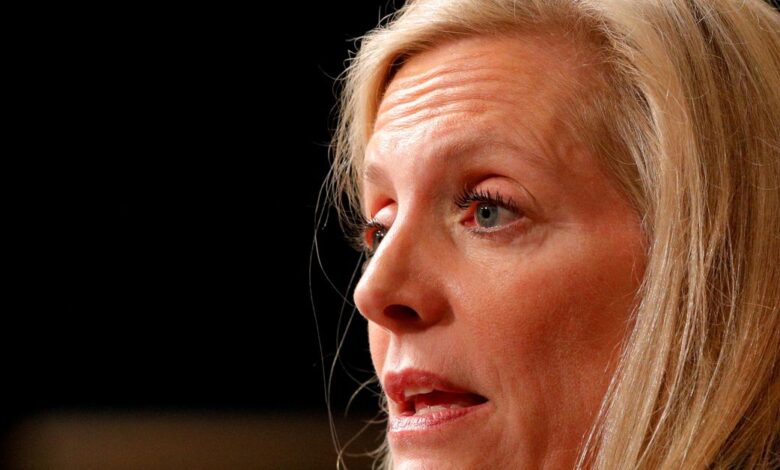Fed officials: Bond taper still hinges on continued job growth

Federal Reserve Board Governor Lael Brainard speaks on the John F. Kennedy Faculty of Authorities at Harvard College in Cambridge, Massachusetts, U.S., March 1, 2017. REUTERS/Brian Snyder
WASHINGTON, Sept 27 (Reuters) – U.S. Federal Reserve officers together with one influential board member on Monday tied discount within the Fed’s month-to-month bond purchases to continued job progress, with a September employment report now a possible set off for the central financial institution’s bond “taper.”
The Fed final week stated a discount in its $120 billion in month-to-month bond purchases might be warranted “quickly,” and Fed Chair Jerome Powell at a press convention Wednesday stated it might take yet one more “first rate” jobs report back to set the method in movement.
However whereas some policymakers have stated they already really feel bond purchases must be minimize, these talking Monday stopped wanting saying the economic system had absolutely cleared the Fed’s benchmark for a bond taper. The central financial institution needs to part out its bond purchases, with a watch towards eliminating this system altogether subsequent 12 months, earlier than its subsequent coverage dialogue over when to lift rates of interest.
U.S. employment is “nonetheless a bit wanting the mark” for the Federal Reserve to taper, Fed Governor Lael Brainard stated on Monday in remarks highlighting the chance {that a} resurgent pandemic might proceed to thwart hiring into the autumn.
Brainard stated she agreed that if hiring continues “as I hope,” the economic system “might quickly meet the mark” that will warrant scaling again the Fed’s $120 billion in month-to-month bond purchases.
However in remarks ready for a Nationwide Affiliation for Enterprise Economics convention, she additionally cautioned that the slowdown in hiring seen in August, when solely 235,000 jobs had been added to U.S. payrolls, might proceed because the unfold of the coronavirus Delta variant hits eating places, journey and different elements of the economic system.
“Employment positive aspects flatlined in August within the leisure and hospitality sector…Because of Delta, the September labor report could also be weaker and fewer informative of underlying financial momentum than I had hoped,” Brainard stated. “We should be humble about our means to accurately anticipate future financial circumstances given the unpredictability of the virus.”
Brainard has been an influential voice on coverage since becoming a member of the Fed in 2014, and her feedback point out how a ultimate choice on when to cut back the Fed’s bond purchases might hinge on the upcoming jobs report for September. That report will probably be launched on Oct. 8, and would be the final employment report the Fed has earlier than an early November coverage assembly.
Brainard in her remarks centered on the truth that regardless of current progress in hiring, “employment stays over 5 million under pre-COVID ranges and almost 8.5 million under the place it might have been within the absence of COVID.”
The restoration in labor pressure participation has additionally lagged, she stated, a incontrovertible fact that distorts knowledge displaying, for instance, that there are extra job openings than unemployed. Over time, she stated, she is assured individuals who have left the work pressure will start on the lookout for jobs once more.
In separate remarks New York Fed president John Williams stated the economic system had made “excellent progress towards most employment,” however stopped wanting saying america had made the “substantial additional progress” the Fed needs to see earlier than decreasing its bond purchases.
That could be on the horizon, nevertheless, he stated.
“Assuming the economic system continues to enhance as I anticipate, a moderation within the tempo of asset purchases might quickly be warranted,” Williams stated.
Equally, Chicago Fed president Charles Evans advised the NABE convention “I see the economic system as being near assembly the ‘substantial additional progress’ commonplace we laid out…If the stream of employment enhancements continues, it appears possible that these circumstances will probably be met quickly and tapering can begin.”
Reporting by Howard Schneider;
Enhancing by Andrea Ricci
:





